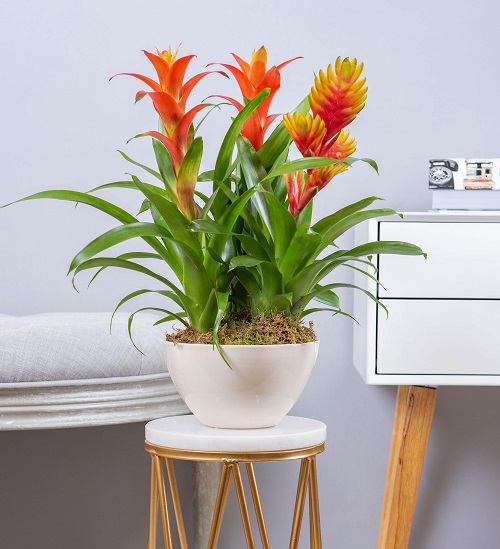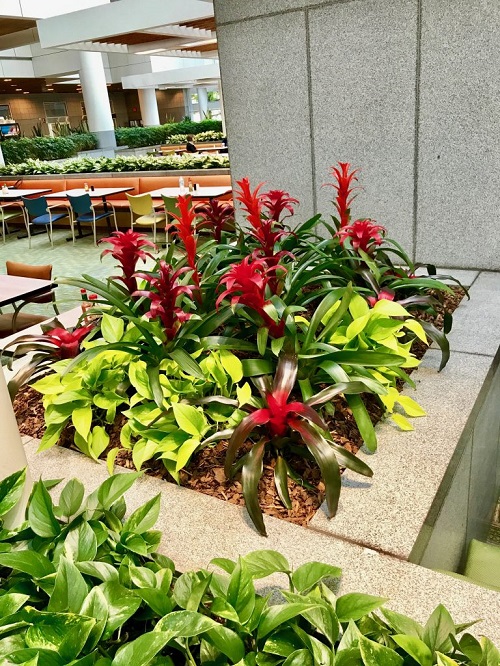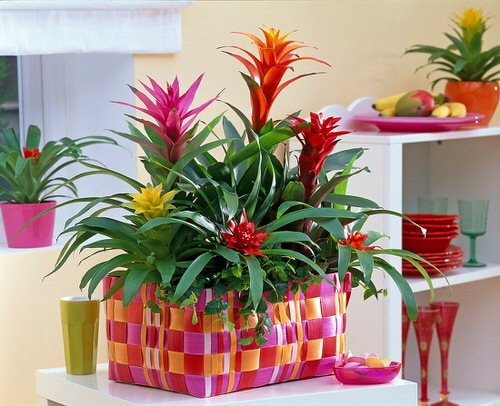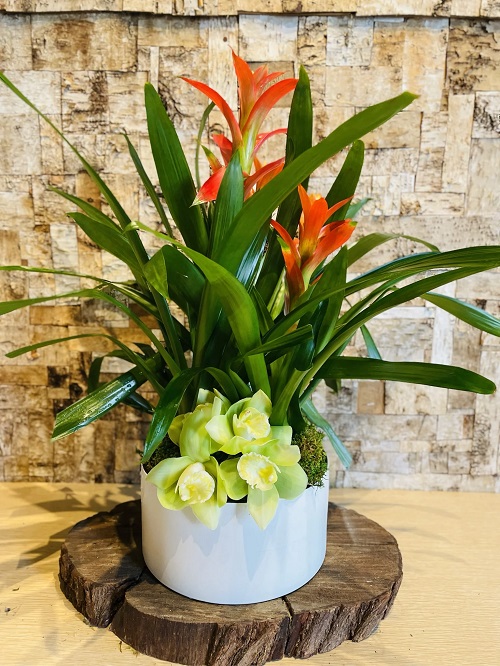Want to know the secrets behind How to Get a Bromeliad to Bloom? We have the best tips that will help you flower your plant!
Wondering why your Bromeliad hasn’t shown off its vibrant bloom yet? You’re not alone; coaxing these tropical beauties into flowering can often feel like an enigmatic art. But fear not—getting your Bromeliad to display its stunning colors isn’t as complex as you might think. Keep reading to unravel the straightforward steps and expert tips on How to Get a Bromeliad to Bloom!
Here are the easiest to grow Bromeliads
Do Bromeliads Flower
Yes, Bromeliads do flower, but the appearance of their flowers can vary widely depending on the species. Typically, a Bromeliad plant will flower once in its lifetime (except for a few species), and the bloom can last several months and sometimes up to a year. By applying these tricks, you can get your new bromeliad plants to flower soon.
Can You Get a Bromeliad to Rebloom:
You may not get your same old bromeliad to rebloom but your plant will grow pups (offsets) around it, which will produce new flowers, and for them, you can apply these tricks.
How to Get a Bromeliad to Bloom

Getting a Bromeliad to flower can be an exciting endeavor. While patience is often required, there are some unconventional methods you can try to encourage blooming. Below are some out-of-the-box ways and special tips on how to coax your Bromeliad into flowering.
1. Ethylene Gas Exposure
- Method: Place a ripe apple in the center of the Bromeliad rosette and cover the plant with a clear plastic bag. Seal the bag tightly. You can also use banana peels, but do not go for more than one banana.
- How It Works: The apple releases ethylene gas, which can stimulate the flowering process in Bromeliads.
2. Manipulate Light Conditions
- Method: Expose the plant to longer dark periods for about two weeks.
- How It Works: Some Bromeliads are sensitive to photoperiod changes, and manipulating light exposure can trick them into thinking it’s time to bloom.
3. Temperature Fluctuation
- Method: Gradually reduce nighttime temperatures by 5-10 degrees Fahrenheit for a couple of weeks.
- How It Works: This mimics the natural environmental conditions that signal the plant it’s time to produce a flower.
Best Full Sun Bromeliads
4. Reduce Fertilization
- Method: Limit nutrient availability by skipping a couple of fertilizer applications.
- How It Works: Reducing the fertilizer can stress the plant slightly, often triggering it to invest in reproduction (i.e., flowering) rather than vegetative growth.
5. Controlled Drought
- Method: Reduce watering frequency for a short period, usually about 2-3 weeks.
- How It Works: A mild drought stress can sometimes induce flowering in Bromeliads, similar to how it works in other flowering plants.
6. Root Pruning
- Method: Carefully remove the plant from its pot and trim away about one-third of the root mass before repotting.
- How It Works: This causes mild stress to the plant, which can often stimulate the flowering process as a survival response.
7. Bloom-Boosting Fertilizers
- Method: Use a low-nitrogen, high-phosphorus fertilizer, like a 10-30-10 – it can specifically target flower production. Dilute it to 1/4 of its recommended strength and use it every 10-12 days to boost the flower production.
- How It Works: Higher levels of phosphorus encourage flowering in many plant species, including Bromeliads.
8. Check the Water Source
- Method: Use rainwater or distilled water instead of tap water.
- How It Works: Minerals and salts in tap water can inhibit blooming; using a purer water source can help.
9. Keep it Root Bound
- Method: Keep the plant in a slightly root bound state, by growing it in a pot that’s one size lesser than the recommended one.
- How It Works: This causes mild stress to the plant, which can often stimulate the flowering process as the plant diverts its energy into blooming rather than using it for root development.
Here are the best Bromeliads you can grow indoors
Important Notes
- Always monitor your plant’s health when trying these methods. If the plant appears stressed, revert to your previous care routine.
- Each Bromeliad species has its own requirements, so it’s crucial to consider the specific needs of your plant when attempting to force bloom.
What Do Bromeliad Flowers Look Like

1. Color Variety
Bromeliad flowers can come in a range of colors including red, orange, yellow, pink, and even lavender. Some species feature multi-colored bracts, which are leaf-like structures that surround the actual flowers and are often mistaken for the flower itself.
2. Flower Shape
The actual flowers are generally small and may be tubular or star-shaped. They usually emerge from a central inflorescence, which can be a simple spike or a more complex branched arrangement.
3. Bracts
In many Bromeliad species, the bracts are more vibrant and long-lasting than the actual flowers. For example, the Guzmania species have bright red, orange, or yellow bracts that last for a long period, while the actual flowers are quite small and less noticeable.
Stunning Indoor Bromeliad Pictures
4. Inflorescence Structure
Some Bromeliads, like those in the Aechmea genus, have a tall, upright inflorescence, while others like Tillandsia have a more delicate and airy flower structure. The inflorescence can vary in height from just a few inches to several feet depending on the species.
5. Unique Features
Certain Bromeliads like the Vriesea species have feather-like flower spikes known as “flaming swords,” which make them particularly unique.
Others like the Neoregalia species have flowers that are not very showy but are interesting because they bloom flush with the water-holding center rosette.
Bromeliad Flower Longevity: How Long Do They Last?
You can expect a Bromeliad flower to last anywhere from 3 weeks to as long as 1-2 months, depending on the variety, species, and growing conditions.




I love bromeliads, I have worked with these garden beauties on many interior scape projects but what I found so amazing is this family is one of the biggest in the plant kingdom comprising 2,700-3000 species. I love the colors, the shapes and the many sizes.
For anyone who wants a plant that is low maimtenance bromeliads make the idea plant, these beauties can be grown indoors as well as outdoors. Some species can even be tied to tree trunks and they will grow. For that instant color pop bromeliads are the go plants.
Thanks so much on sharing on how to cause bromeliads to bloom, I did not know that Ethylene Gas Exposure help to force bromeliads to bloom. I learn something new. Thanks so much for sharing!!